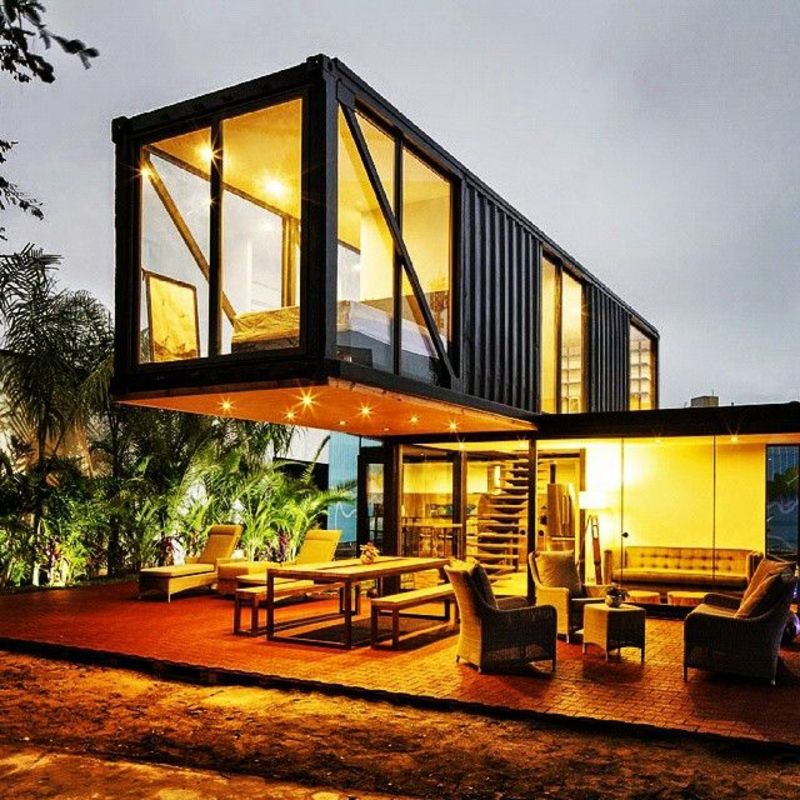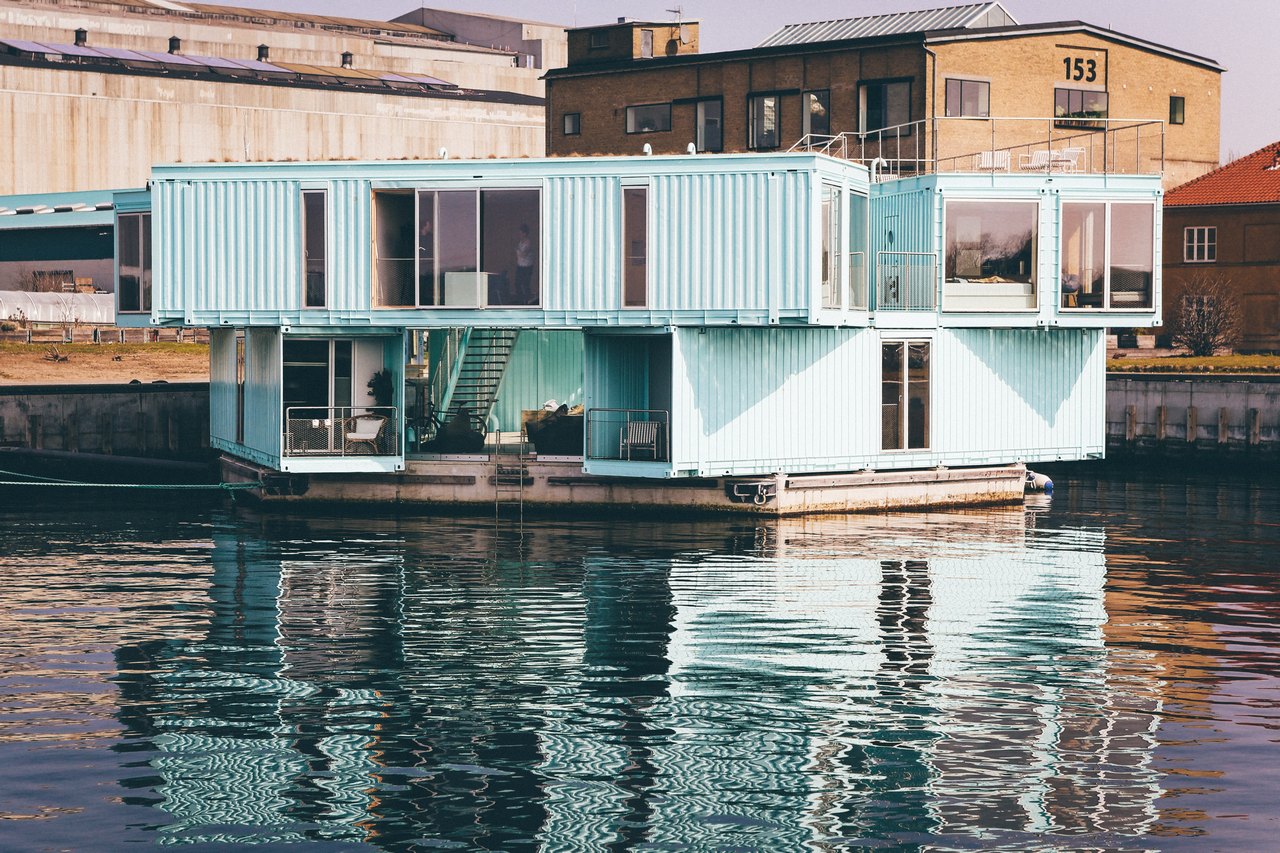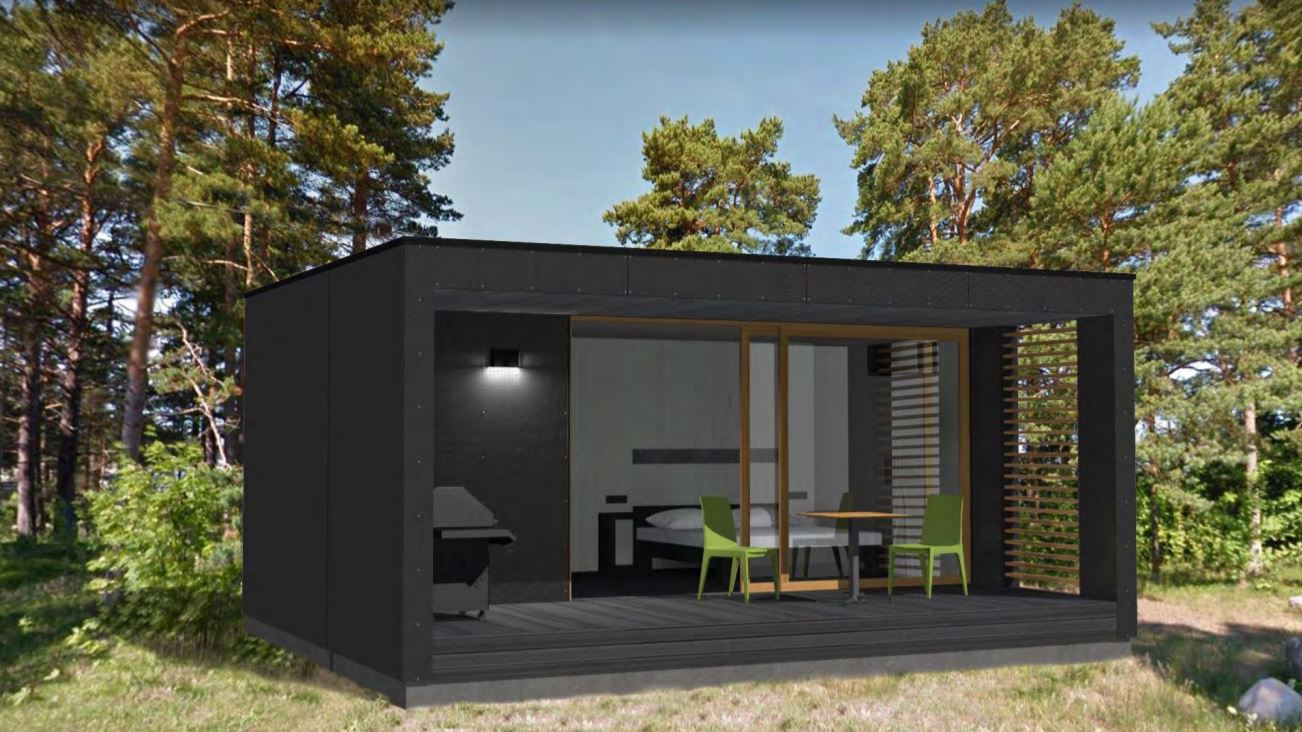Shipping container homes are indeed a trend.
We see them pretty often on social media and in online magazines ...but is the hype worth your attention and money?
Here are a few questions you might be wondering:
- are people really building them?
- is it a safe choice to build your home with recycled steel?
- are they easier to build?
- are "container-homes" really cheaper?
- is there a better alternative to container homes?
And here are the answers...
Monkey see, monkey do
People tend to focus their attention on what other people are doing.
We do this so much that often we end up copying others in their new "passions".
Now, make no mistake, this behavior is not created by the widespread of information on social media, it is something that helped us evolve into sentient human beings.

In fact, "do what others do" is what kept us safe in those times when shelter and food were a luxury (think 10000 years ago).
If your neighbor eats the pink berries and he does not die, you can safely do the same... and you better avoid trying the blue ones, you never know.
Social media leverage this innate behavior of ours and use it to keep us glued to the screen of our devices, lurking and gathering info on what others do, in the unconscious attempt to improve our own life.
I know what you are thinking:
what do container-homes have to do with this?
Following the same behavioral pattern, once this particular construction trend hit the major architectural portals and social media (Pinterest and Instagram in particular), it became the new thing that "people are doing".
So we were led to believe that the "cool kids" are now building houses out of used containers and that is perfectly safe to do so... not only, it is also easy and cheap!
...right?
WRONG.
Are people really building container-homes?
I'd say there are fewer people building such homes than people living permanently in an RV.
It sounds cool but it isn't easy nor cheap (more on that in a moment).
Unfortunately, there are no stats we can show here, but we are pretty sure many were "burned" by the promise of building a tiny house for cheap.
That little project most likely turned into a money-sucking pit and had to be abandoned to avoid further loss.
This is due to the fact that starting the build from a steel container gives the false impression that most of the project is done.... after all, you have a shell already.
The problem with it is that the shell you have is totally not suitable for living.
In the end, the cost of the shell itself accounts for less than 10% of the cost of the entire project.
You see where this is going...

On top of the cost of the container itself you have to account for:
- ground preparation;
- foundations;
- connections to utilities (water, electricity, sewage, ...);
- transport & crane for moving the container onto place;
- reconditioning for health safety (more on this below);
- cutting and welding for windows (more on this below);
- interior framing for insulation;
- insulation;
- technical installations (water, electricity, ...);
- interior finishes.
In the end, getting a headstart on something that represents a tiny fraction of the finished object is no headstart at all.
Is it a safe choice to build your home with recycled steel?
As they are when you get them from the shipping yard, metal containers are not suitable for living.
Lots of work need to be done to turn them into safe and comfortable living spaces.
Here are some of the main issues regarding health safety and comfort:
- it might have been used to transport toxic goods
Most likely the seller of the used container cannot account for all the whereabouts of the steel-box you are considering to purchase.
When it is so, you have no idea what crazy stuff has been in there (toxic, mildly radioactive, ...)
Why would you want to risk making your nest in there?

- the paint most likely contains toxic compounds
Sea shipping containers are engineered to cope with extreme weather conditions.
For this reason, the paint used on the exterior and interior surfaces is VERY tough and it contains lots of chemical compounds you would not want in your home.
At the very least, the entire interior of the container needs to be sanded to steel, removing all the paint to make it safe for you to settle in there.

- a steel container has no thermal insulation
Once you get rid of all the toxic hazards, you'll have to face the fact that the side of a container is little more of a paper sheet thick... and it cannot keep the cold or the heat outside.
That calls for a lot of work to insulate it properly in order to guarantee a good indoor climate.
- no load-bearing capacity once you open up a "window"
You can't live in a closed box, so you are going to need at least one door and one window.
You are going to need to make openings in the side of the container.
As mentioned above, the walls of a steel shipping container are super thin and the whole structure is designed to stand with continuous walls.
Once you cut a hole in there, you have to reinforce the opening with steel profiles... which means you'll need materials and a good welder.

SIDENOTE: steel is 100% recyclable (they melt it to make new one) so, other than saving the energy for melting the steel, building your home with shipping containers does not really help the planet.
Are container-homes easier to build?
Well, if you've been paying attention you know by now that:
- all the paint in the container has to be removed;
- you'll need to insulate it properly;
- every opening you make needs reinforcement.
To this I'd add:
- you are constrained in space by the size of the container;
- you'll need a crane to move the containers in place;
- you cannot stack them on top of each other.
SIDENOTE: thinking that containers can be stacked in a cantilevered position (see image below) is a common misconception.
Shipping containers are designed to be stack one on top of the other and that's the ONLY configuration they can be stacked in.
Needless to say, that's a rather ugly one.

We find that building a house with re-purposed shipping containers comes with a lot of unnecessary hassle.
We've honestly been wondering what is all the fuzz about...
Oh, wait... maybe it is just cheaper?
Are container-homes really cheaper?
If you've been living on earth for a couple of decades, you already know it: the cheap option is often the more expensive one.
...but in case you don't fully grasp it yet, here we break it down for you.
A shipping container is nothing but a metal box designed to store and transport goods safely.
It is not intended to provide housing.
Sure, you can easily convert a shipping container to function as an auxiliary space for your home.
Here are a couple of good use cases for a shipping container:
- to store unused items;
- to store your bikes, kayak, ATV...
But a shipping container isn't supposed to be used as the place where you or your loved ones spend the night.
Converting the container to that use, require all the works listed above (removing the paint, adding insulation, reinforcing the structure, ...).
Wouldn't it be easier to start from scratch with a more eco-friendly (and wallet-friendly) solution?
Is there a better alternative?
With so many downsides, there must be a better alternative to container homes, right?
After doing the math many many times, we believe that building a wooden container-like home from scratch is indeed cheaper and more flexible than buying one or more shipping containers and re-purposing them.
Let's face it: working with wood is easier (and safer) than working with metal.
No disc-cutting, no grinding, no welding.
Building onsite from scratch also gives you the possibility to tweak a bit the measurements of the building, instead to be forced to stay into the space of a pretty tight box.
Producers of manufactured homes have been using this philosophy for decades, however, people seem to still be looking at re-purposing as a better option.
I believe the culprit here is the fact that the initial cost of buying a used container is low and it makes it seem like an affordable way to start the project.
But we've seen already that the cost of container itself is only a 10% of the cost of the entire project, so who approaches the project this way is seriously overlooking all the costs that come later.
Sure, a ready-made container-like home (made using wood and eco-friendly materials) sets the price way higher than a DIY project... but who said it has to be ready-made?

What we are suggesting here is to still treat the project as a DIY and just buy the parts in a kit.
In other words, we are talking about DIY wooden container-like homes.
Compared to their steel equivalent, this type of novel dwelling offers the following advantages:
- flatpack transport (less cost and impact on the environment);
- no crane required for construction;
- eco-friendly and perfectly safe materials;
- outstanding energy performance;
- complete freedom when it comes to openings;
- easy and quick to build (just screws).
The total cost of a project built with this system is generally smaller than what it would cost going the shipping-container way.
Also, it is more DIY friendly as it offers more margin for error and mistakes are easier to fix when the structure is entirely in wood.
Conclusion
Although shipping-container homes are trending on the media, it does not mean people are actually building them.
Contrary to what most people think, building a house with re-purposed shipping containers is not cheaper than starting from scratch.
That is because containers are not designed for living and a lot of work has to go in there before you can consider it a safe and comfortable place where to spend the night.
Building with wood, it is possible to create DIY kit homes that are container-like in shape and can be built by anyone.
The look of these tiny houses can be adjusted to individual needs and preferences and, unlike their a re-purposed shipping-container dwelling, they are 100% eco-friendly and wallet-friendly.
In the end, building from scratch with a wood DIY kit is not only a better alternative to container homes but also a greener one.
If you want more information or you have any other kind of question, feel free to reach out to us.





